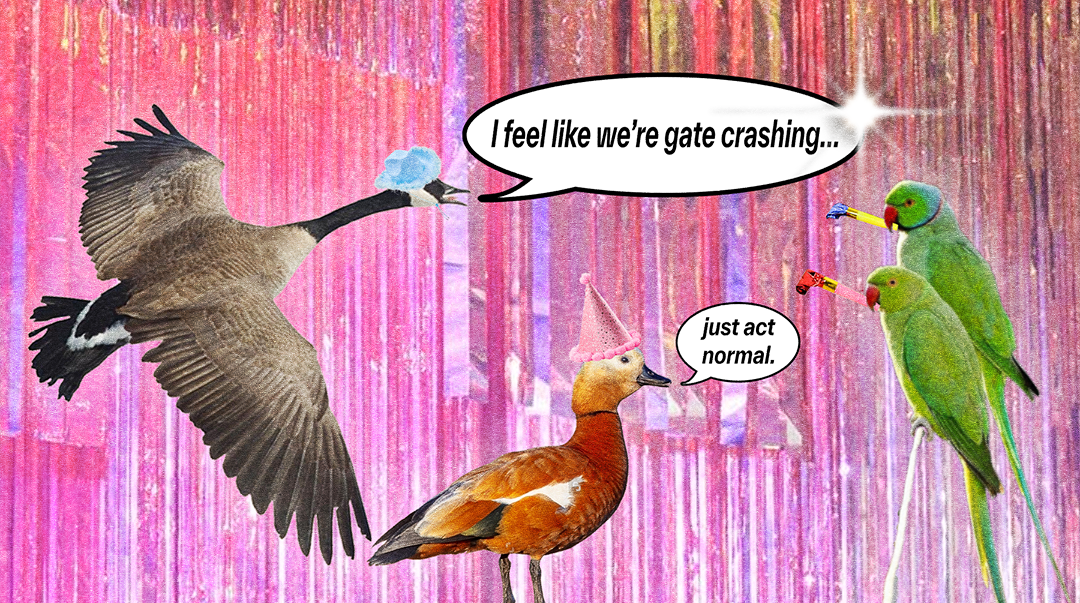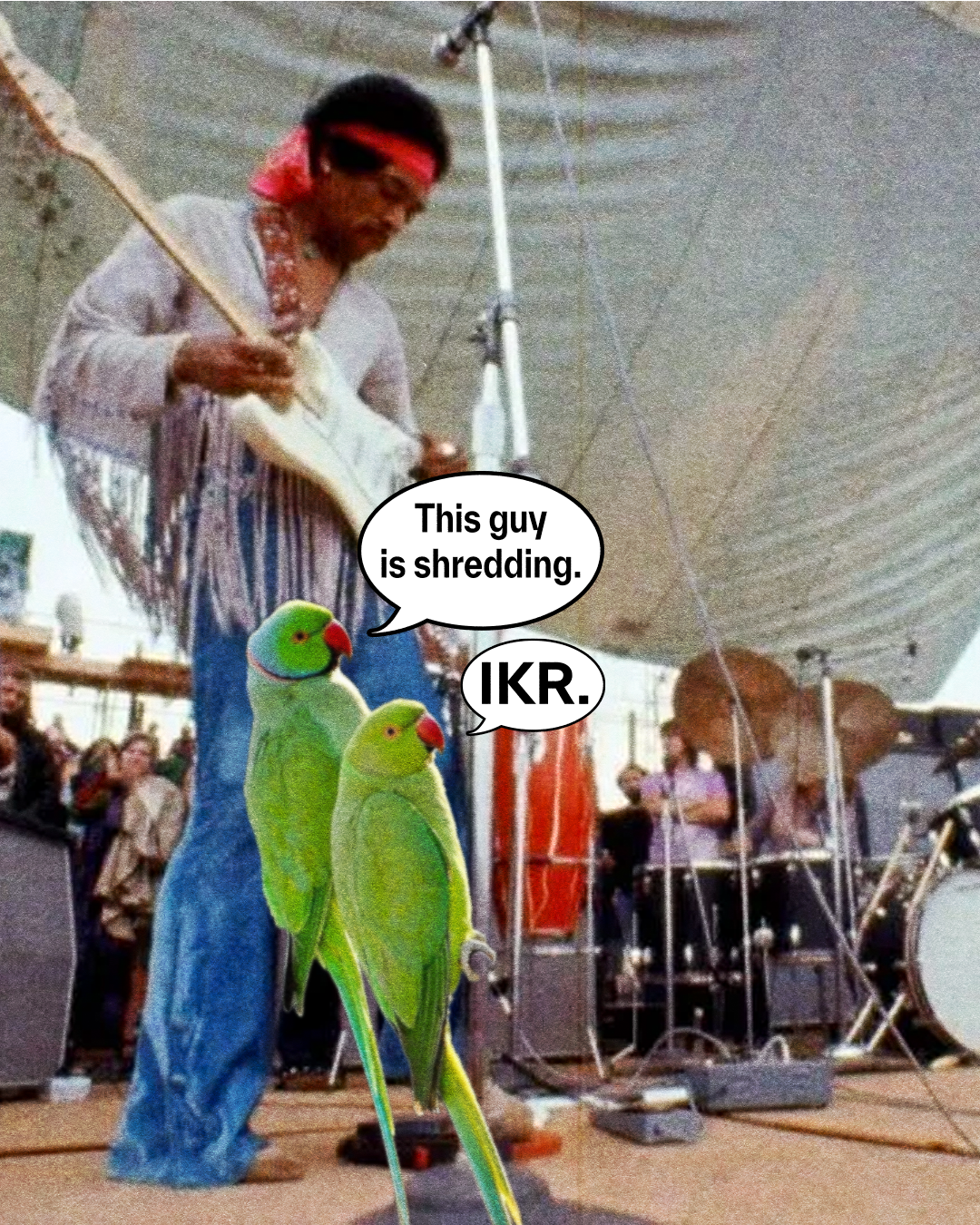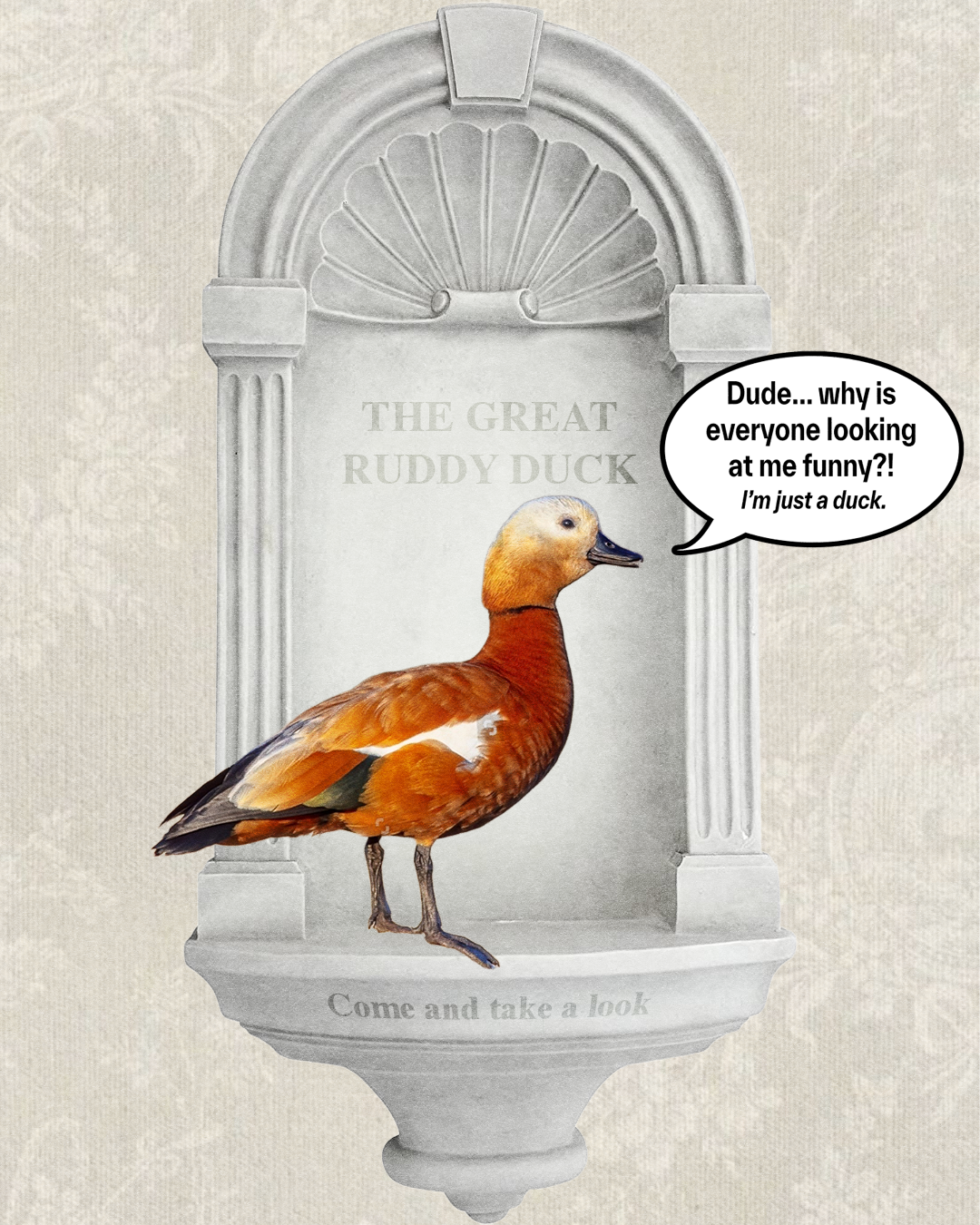Did You Know These Common British Birds Are Actually Invasive Species?!
19/08/2025
The UK is home to numerous invasive bird species; chances are you're familiar with a few of them. But why are they here? What does this mean for our ecosystems? And will/should they ever leave?
You’ve seen them, know them, and might even love them, but did you know there are several non-native bird species introduced to the UK that are considered invasive?
These include fond favourites like Canada Geese, Rose-ringed Parakeets, and Ruddy Ducks. These species are not only non-native to the UK but also compete with native birds for resources, alter their habitats, and even crossbreed with them, making them invasive. It’s not their fault – we promise – but they’re unknowingly harming local ecosystems.
An example closer to home – invasive humans
It’s like when you’re at a party and there’s only a certain amount of food. If your friend asked someone to come and they weren’t initially invited, would you consider them to be invasive? Maybe. Because an extra mouth means less food for you and your community, and also, what if you have your eye on a boo and they swoop in?!
Some birds, though, like the Mandarin Duck, are non-native, but they’re not considered invasive. That’s because, although they were introduced to the UK artificially from private waterfowl collections in the early 20th Century, they’re deemed not to have a negative effect on the local ecosystem.
Invasive species – how do they get here?
Some birds have been intentionally introduced, perhaps for ornamental purposes, to attract specific species or as game birds to be hunted, like pheasants. Or, bird species may be accidentally released, like those that escape from aviaries, are released as pets, or are abandoned by owners. Sometimes, it's a combination of intentional and accidental releases of a bird species that creates the perfect conditions for them to thrive. Which might be the case for one of the UK’s oldest and most notable invasive birds…
Invasive species celebrity – the Ring-necked Parakeet
First spotted in the UK in 1855, although those early birds are not thought to have survived for very long, it wasn't until the late 1960s that Ring-necked Parakeets settled down properly in Kent.
There are many urban myths about how they got here, like escaping from the set of a Katharine Hepburn movie, The African Queen, during filming in West London, or that Jimi Hendrix released a pair on Carnaby Street. These stories may be true, but it’s more likely that a build of several escapes over the years has led to the thriving population we have today.
Since 1995, their population has increased by more than 2000%. People, including us, love them, but they’re trouble for local ecosystems. These winged visitors outcompete smaller native birds for food, displace nesting native birds, such as woodpeckers, nuthatches, and starlings, from their nesting holes, and can potentially even drive bats out of their nesting habitats.
What’s the solution for invasive species in the UK?
Much like your friend’s friend from earlier, you couldn’t say it’s necessarily their fault; invasive species didn’t ask to be put into a different ecosystem. There are even cases where invasive populations can be important for conservation efforts, such as the thriving invasive population of Yellow-crested Cockatoos in Hong Kong. Although these cockatoos may be negatively affecting local species, they’re a critically endangered species that faces serious threats in their native range.
Whilst some introduced species may be relatively harmless, many invasive species, as we’ve seen, could be pushing native species further towards extinction. We can’t blame a species for simply existing where it’s not supposed to, because we have moved it there; however, we can’t simply leave the damage we have caused to push native species closer to extinction. What do you think?
More of the latest from the Edge zine… ↴
Share article:
Read more: Birds | Explainers










